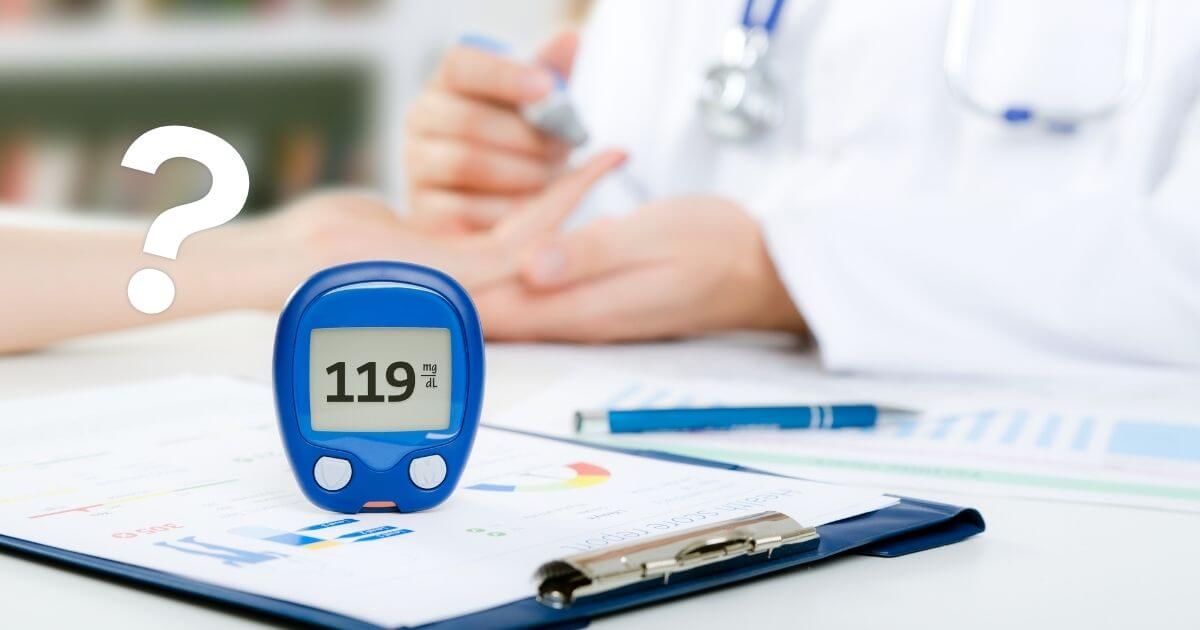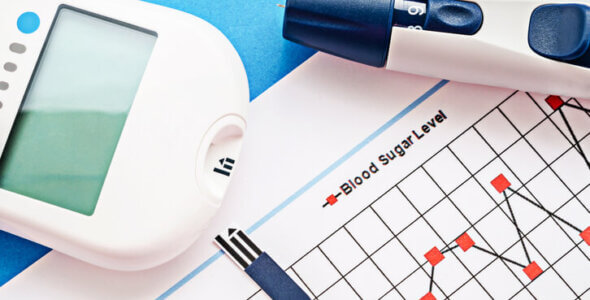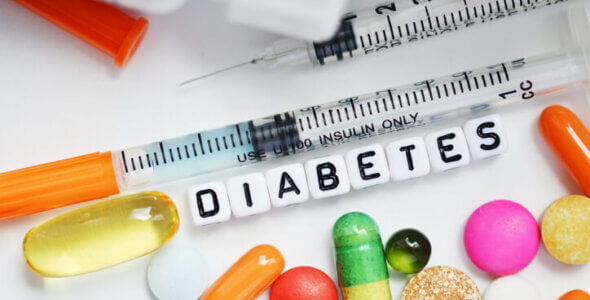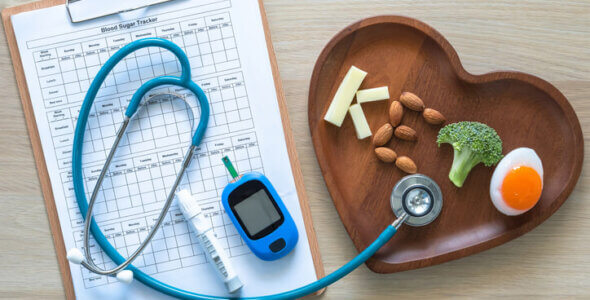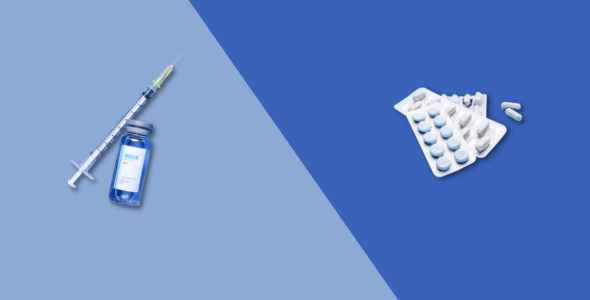How to lower blood sugar fast
Table of contents
High blood sugar, also known as hyperglycemia, can happen if you are a diabetic for many different reasons, including being unwell, eating more than planned, not producing enough insulin in your body, unplanned physical activity, and stress. Untreated hyperglycemia can lead to serious health problems.
The vast majority of hyperglycemia cases are mild but when things get serious you need to know what to do fast. If it is an emergency and you need to reduce blood sugar levels immediately, use insulin. An extra dose of insulin can be taken if you have either type 1 or type 2 diabetes. The amount depends on the situation and your doctor’s recommendation. It is important you know when to seek medical attention from an emergency room. Read on to find out how to lower blood sugar fast.
Take rapid-acting insulin
If it is an emergency and you need to lower blood sugar quickly, use insulin. An extra dose of insulin can be taken if you have either type 1 or type 2 diabetes. The amount depends on the situation and your doctor’s recommendation. It is important you know when to seek medical attention in an emergency.
Take your prescribed medication
Take your diabetes medication regularly as instructed by your doctor and check your blood sugar levels as instructed.
Monitoring your blood sugar levels
As a diabetic, monitoring your blood sugar level is unquestionably the best way to know what is going on inside your body. Keeping your blood glucose under tight control undoubtedly reduces the chance of developing complications. Using a blood glucose meter for glucose monitoring is an essential tool in your diabetes management. How often you check your blood sugar depends on the type of diabetes you have.
Individual blood glucose test strips are great for knowing immediately how your diabetes is controlled. It is equally important to know how you are doing over weeks and months. The A1c test gives us this information as it looks at how good your blood glucose control has been over a period of 3 months.
The A1c test is a great test for a diabetic woman who wants to get pregnant. You can find out if your blood glucose has been well controlled before conceiving. If it has not, you can wait until you have good control. In this way, you reduce the possibilities of complications with your baby.
When to check your blood sugar levels
Type 1 diabetes, adult: Check at least twice daily, up to 10 times a day. You should perform tests before breakfast, at fasting, before meals, sometimes 2 hours after meals, before and after physical activity, and at bedtime.
Type 1 diabetes, child: Check at least four times daily. You should perform tests before meals and at bedtime. Tests may also be required 1–2 hours after meals, before and after exercise, and overnight.
Type 2 diabetes, people using insulin or other management medications: The recommended frequency of testing varies depending on insulin dosage and the use of any additional medications.
Manage carb intake
Carbohydrates are the primary source of energy for muscles, and glucose is the carbohydrate that causes the pancreas to release insulin. Carbohydrates cause the triglyceride level to rise in the blood. However, this usually happens if the carbohydrate in your diet is largely refined, where your total calorie intake is high or where your blood sugar control is poor. When insulin isn’t present or is not effective more carbohydrate raises the blood glucose higher causing blood sugar spikes.
You need to choose your type of carbohydrate carefully. If you have too much-refined carbohydrates e.g white bread and not enough complex carbohydrates, your triglycerides can rise. The way to eat the right amount of carbohydrates without increasing your blood sugar is to eat low glycemic index (GI) and high fiber carbohydrates. Your healthcare provider or dietician will give you advice on creating a diabetes diet plan with the best foods tailored to you.
Read our blog on what foods to avoid with diabetes for more information.
Drink water
By drinking water when your blood sugar gets high, your body tries to flush out that excess sugar as quickly as possible. Drinking enough water could help you keep your blood sugar levels within a healthy range.
Exercise
With exercise, insulin levels can lower blood sugar and increase insulin sensitivity. While exercising, your body is better able to use insulin and helps move sugar from your blood into your cells for storage. During muscle contractions, your cells take up glucose for energy and use it whether insulin is available or not, resulting in lower blood sugar.
It is very important to remember that you should not exercise if ketones are present in your urine as this can make your blood sugar go even higher.
Always seek medical advice from your health care provider for your diabetes care.
Other ways to manage your blood sugar
- Dietary changes
- Monitor your body weight to keep within a healthy weight range to avoid obesity
- Drink alcohol moderately
- Keep a logbook of blood sugar readings
- Becoming totally aware of your own symptoms for low/high blood glucose
FAQs
What are the symptoms of high blood sugar levels?
The following symptoms occur:
- Headaches
- Blurred vision
- Excessive thirst
- Dry mouth
- Frequent urination
- Tiredness
- Weight loss
- Fruity smell to your breath
- Thrush and bladder infections
High sugar levels slowly erode the ability of cells in your pancreas to make insulin. Frequent and prolonged high blood sugar levels can lead to diabetic ketoacidosis (DKA). As the name suggests, your blood becomes acidic due to the presence of high levels of ketones. The smell of acetone on the breath is one of the classic ways your doctor can make a diagnosis.
Symptoms of ketoacidosis:
- Extreme tiredness and drowsiness
- Nausea and vomiting
- Weakness
- Rapid breathing
- Confusion
Diabetic ketoacidosis is a medical emergency that needs to be treated immediately.
What are normal blood sugar levels?
The blood glucose level is the amount of glucose in the blood. According to the American Diabetes Association (ADA), healthy blood sugar levels for a person without diabetes are:
- Fasting blood sugar level – under 100mg/dL (in the morning before eating)
- 1 hour after eating 90-130mg/dL
- 2 hours after eating 90-110mg/dL
- 5 or more hours after eating 70-90mg/dL
What are the complications of high blood sugar levels?
Diabetes complications can occur if your diabetes is not treated correctly, issues it can cause are:
- Heart disease leading to a heart attack
- Kidney disease
- Vision loss e.g. cataracts, glaucoma
- Foot and skin problems e.g. dry skin, loss of elasticity of the skin, or ulcers on the feet
- Blood vessel damage
- Nerve damage
Some complications of diabetes can lead to life-threatening problems if they are not picked up and treated on time. Read our blog on the complications of diabetes for more detailed information.
What is pre-diabetes?
Prediabetes is when your blood sugar is high, but the blood test results are not high enough to be classified as diabetes. An oral glucose tolerance test is used to diagnose prediabetes with a blood sample.
Your healthcare professional will discuss your risk factors for diabetes such as your family history, other health conditions, and your current lifestyle. After gathering all this information advice will be given on how to bring your blood sugar levels into a healthy range. This will also bring additional health benefits.
Lifestyle changes including eating a healthy diet, and improving your knowledge of healthy foods and low GI foods are very important when you have been diagnosed as borderline diabetic. A dietitian can put together a pre-diabetes diet and meal plan with you by looking at:
- Calorie intake, including high fiber, particularly soluble fiber, and wholegrain foods to keep you fuller for longer
- Lowering your carb intake
- Looking at low glycemic index foods (GI foods) e.g. lentils, legumes
- Low-fat alternatives
- Healthy fats e.g. olive oil
- Omega-3 fatty acids and antioxidants e.g. salmon
Read our blog on top 20 best snacks for diabetics for ideas on healthy choices.
Your care team will also discuss ways to increase your physical activity, and how to keep your cholesterol and blood pressure under control to help reduce your risk of diabetes. Metformin is often recommended for individuals with prediabetes if healthy eating and lifestyle changes are not enough.
Which foods control blood sugar levels?
To lower blood sugar levels, and reduce blood sugar response some food choices are particularly useful to be included in a diabetic meal plan:
- Non-starchy vegetables
- Plain yogurt packed with healthy probiotics and no added sugar
- Chia seeds
- Chickpeas
- Flaxseeds
- Fatty fish
- Blueberries
The aim is to achieve a diet balanced with nutrients and vitamins, like vitamin E, omega-3 fatty acids, and magnesium which control blood sugar levels and improve heart health.
What is the average blood sugar level?
The average blood sugar level differs based on age, how long you have had diabetes, medication taken and other medical illnesses you may have. The tables shown earlier in this blog give you an idea of the ideal levels, but your healthcare team will advise you on your ideal levels.
What medications can raise blood sugar levels?
Many types of medications and some OTC (over-the-counter) medications raise blood sugar levels, but this does not mean they can not be taken if they are needed. You must work with your doctor on the correct way to use them. Some prescription medicines that increase blood sugar levels are steroids, birth control pills, statins, drugs that treat mental health issues, medication for acne, and high doses of asthma medicines. Some OTC medicines that increase blood sugar levels include decongestants, cough syrups, and supplements.
Common medications that cause an increase in blood sugar levels are:
- Beta-blockers e.g. atenolol
- Diuretics
- Corticosteroids e.g. prednisone for rheumatoid arthritis treatment
- Over the counter supplements e.g. niacin
- Antidepressants e.g. selective serotonin reuptake inhibitor drugs like citalopram
Which medications can be used to treat Type 2 diabetes?
There are several prescription drugs that are commonly used to treat Type 2 diabetes:
Can stress cause high blood sugar levels in non-diabetics?
When you are stressed the hormone cortisol is released. Cortisol blocks the effects of insulin in your body. This means sugar is not moved from the blood into the cells and can cause high blood sugar levels in non-diabetics. If cortisol is released too often or its effects last too long it raises insulin levels and can result in insulin resistance and type 2 diabetes.
High-risk factors, such as high blood pressure, a history of polycystic ovary syndrome (PCOS), or heart disease, and race should be taken into consideration.
What is hypoglycemia?
The condition of low blood sugar levels is called hypoglycemia. Having lower blood sugar levels when you have diabetes (also called diabetes mellitus) is a consequence of your diabetes treatment. As a diabetic, you are in constant combat with hyperglycemia which is responsible for most of the long-term and short-term complications of the disease. Hypoglycemia can occur because drugs and treatments are not always perfect. If you take too much of a certain drug, exercise too little, or don’t eat enough, your blood glucose can drop to low levels at which symptoms can develop.
When these symptoms develop eat a snack to raise levels e.g. fruit juice or honey. In some cases, a glucagon emergency kit may be needed.
Medically reviewed
A medical professional has reviewed this article.


Jamie Winn, PharmD
Jamie Winn, PharmD
Dr. Jamie Winn received his Doctor of Pharmacy in 2002 from the University of South Carolina College of Pharmacy, Columbia, SC. Jamie is a medical reviewer for NiceRx.

